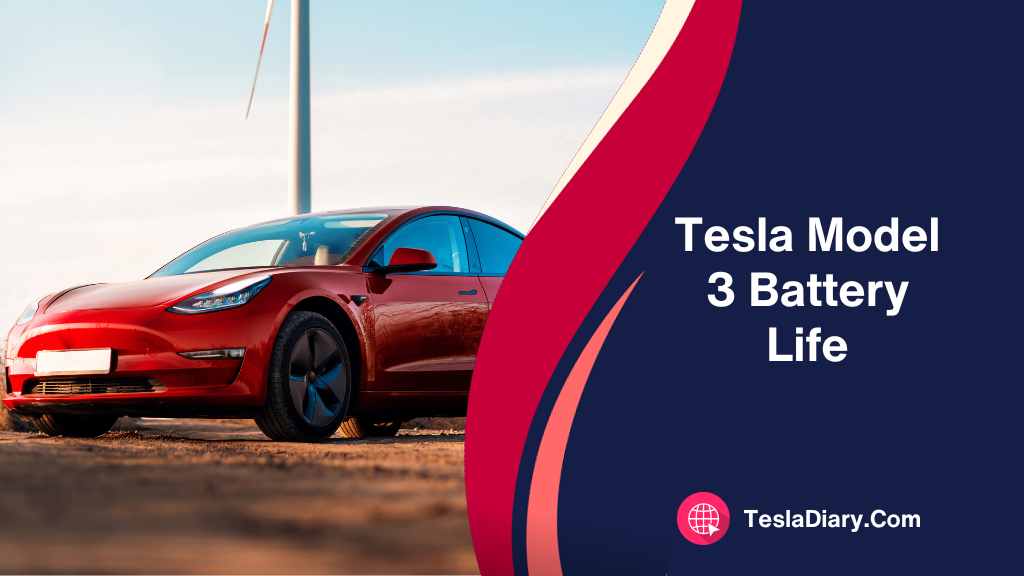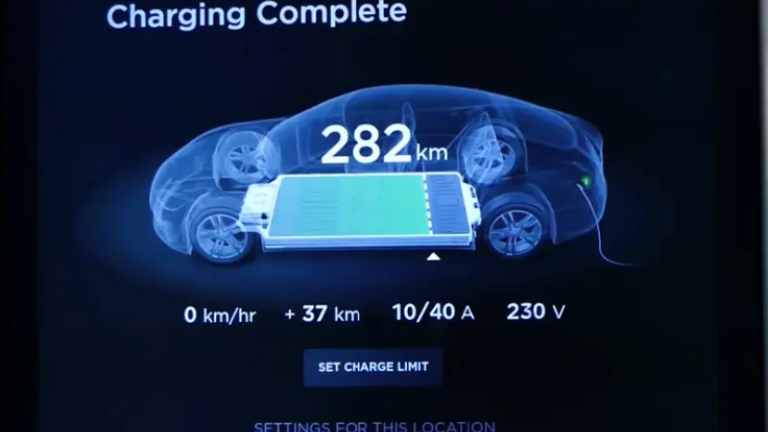In the realm of electric vehicles, one of the most crucial aspects that buyers consider is battery life. The Tesla Model 3, like all EVs, relies on a robust battery system to power its electric motor and provide the range needed for daily driving.
The ability to travel long distances on a single charge is a key selling point for any electric vehicle, and Tesla has been a leader in this aspect.
The purpose of this article is to delve into the heart of the Tesla Model 3’s battery system, exploring its composition, technology, and capacity. Furthermore, we will examine the various factors that influence the battery life per charge, ranging from driving habits and weather conditions to the impact of software updates.

Tesla Model 3 Battery Life Life Per Charge by Variant
The Tesla Model 3 lineup offers a trio of distinct variants, each catering to a unique set of driving preferences and performance expectations. Let’s take a closer look at these variants and their respective battery configurations, as well as provide a handy comparison table for easy reference.
Model 3 Standard
Model 3 Standard is designed as an efficient and cost-effective electric vehicle. With rear-wheel drive, it offers an estimated 272 miles of range according to EPA standards, making it a practical choice for daily commuting and urban driving. It reaches a top speed of 140 mph and accelerates from 0 to 60 mph in a brisk 5.8 seconds.
Model 3 Long Range
Model 3 Long Range takes range and performance up a notch with dual motors and all-wheel drive (AWD). It boasts an impressive range of approximately 333 miles, ensuring you can cover substantial distances without frequent charging stops. The top speed reaches 145 mph, and it accelerates from 0 to 60 mph in just 4.2 seconds, offering both efficiency and enhanced performance.
Model 3 Performance
Model 3 Performance caters to driving enthusiasts, offering high-performance capabilities while maintaining efficiency. With dual motors and AWD, it delivers a range of approximately 315 miles.
It stands out with a remarkable top speed of 162 mph and accelerates from 0 to 60 mph in a mere 3.1 seconds, providing a sports car-like driving experience.
For a quick and easy comparison of these Model 3 variants, refer to the table below:
| Model Variant | Drive Type | Range (EPA est.) | Top Speed | 0 to 60 mph Acceleration |
|---|---|---|---|---|
| Model 3 Standard | Rear wheel drive | 272 miles | 140 mph | 5.8 sec |
| Model 3 Long Range | Dual motor, all-wheel drive | 333 miles | 145 mph | 4.2 sec |
| Model 3 Performance | Dual motor, all-wheel drive | 315 miles | 162 mph | 3.1 sec |
The ranges discussed here are according to Tesla. In our experience, we have not found the exact same range as expected. I would recommend cutting out 10% of the range and then planning your purchase or commute.
What Causes Tesla Model 3 Battery Life to Drain?
The battery life of any electric vehicle, including the Tesla Model 3, can vary based on a range of factors. It’s crucial to comprehend what influences battery drain to maximize your EV’s efficiency. Here are some key factors:
Driving Habits:
Aggressive driving, rapid acceleration, and frequent braking can drain the battery faster. Adhering to smooth and efficient driving practices can help extend battery life.

Climate Control:
Running the air conditioning or heating system requires energy and can impact the battery. Preconditioning the car while it’s charging can help minimize the energy used for climate control.
Terrain:
Hilly or mountainous terrain can lead to increased energy consumption as the vehicle works harder to maintain speed on inclines.
Weather Conditions:
Extreme temperatures, both hot and cold, can affect the battery’s performance. Very cold weather can reduce range due to increased energy use for heating, while hot weather can impact cooling efficiency.
Understanding these factors and adapting your driving and charging habits accordingly can help you get the most out of your Tesla Model 3’s battery life per charge.
Tesla Model 3 Charge Rate – The Charge Speed!
The charging infrastructure for electric vehicles continues to expand, providing convenience and accessibility for Tesla Model 3 owners. Understanding the charge rate, whether through DC or AC charging, is crucial for planning your journeys and optimizing your charging experience.
DC Charging
Direct Current (DC) charging, often referred to as fast charging, is the quickest way to charge your Tesla Model 3.
Tesla’s Supercharger network is an example of DC fast charging. It provides high-power charging stations strategically located along highways, allowing for rapid recharging during long trips.
The Model 3 can charge at impressive rates when connected to a Supercharger, significantly reducing charging times. To be specific-
- Standard Model 3 charges at a rate of 150-180 kWH in Superchargers.
- Model 3 Long Range and Performance variants charge at a rate of 220-250 kWH in Superchargers.
AC Charging
Alternating Current (AC) charging is typically slower than DC charging and is commonly used for home charging or public Level 2 charging stations.
The Model 3 comes with a Mobile Connector that can be used for AC charging. Mobile Connector charges at a rate of 1 kWH which is extremely slow, giving merely 3 to 4 miles of range per hour of charge.
Also, the Wall Connector sold by Tesla is also based on this system. It is faster than Mobile Connector but significantly slower than the Superchargers. Here’s the rate-
- Model 3 Standard – 7.6 kWH
- Model 3 Long Range and Performance – 11.5 kWH
While AC charging is more time-consuming than DC charging, it’s suitable for overnight charging at home or for shorter trips where you have more time to charge.
The Tesla Model 3 Charging Times
Understanding the charging times associated with different charging options is essential for planning your journeys and ensuring you have enough charge for your needs. Here’s a brief overview of charging times for the Tesla Model 3:
Home Charger
Charging your Model 3 at home using a standard 120-volt household outlet is the slowest method, known as Level 1 charging (Mobile Connector). It can take several days to fully charge your vehicle this way, especially for long-range variants.
For faster home charging, consider installing a Level 2 charger (Wall Connector), which operates at 240 volts and significantly reduces charging times. A Model 3 can be fully charged within 10 hours with a 240-volt Tesla Wall Charger.
Supercharger
Tesla’s Supercharger network is designed for rapid charging during long trips. The Model 3 can gain a substantial amount of charge in a relatively short time when connected to a Supercharger.
Charging times at Superchargers can vary based on factors such as battery capacity, current charge level, and the specific Supercharger station. No matter what Tesla Model 3 variant you have, it should not take more than 30 minutes to fully charge your vehicle.
Public Level 2 Charger
Public Level 2 charging stations are commonly found in shopping centers, parking lots, and other public areas.
These stations offer faster charging compared to standard home outlets but are slower than Superchargers. Charging times at public Level 2 chargers are equal to the time of your Wall Connector. These are basically Wall Connectors installed for public use. So, around 10 hours for a Tesla Model 3 to fully charge in these chargers.
How to Maximize Tesla Model 3 Battery Life?
Optimizing your Tesla Model 3’s battery life is essential for ensuring long-term efficiency and performance. Here are some additional tips to help you make the most of your Model 3’s battery:
1. Charge to 90% for Daily Use
Tesla recommends keeping your battery fully charged to the recommended 90% limit for daily use (90% is set by default as well). Charging to 100% regularly can accelerate battery degradation, so save full charges for long trips.
2. Plan Charging Around Your Routine
Set charging schedules in your Tesla app to take advantage of off-peak electricity rates. This not only saves you money but also reduces strain on the power grid during peak hours.
3. Battery Preconditioning
Use the Tesla app to precondition your car before charging. This allows the vehicle to optimize the battery for charging and preserving your range.
4. Tire Maintenance
Regularly check and maintain proper tire pressure and alignment. Well-maintained tires reduce rolling resistance and improve efficiency.
5. Avoid Extreme Temperature Extremes
Extreme hot or cold weather can impact battery performance. Whenever possible, park your Tesla Model 3 in a shaded area or a garage to mitigate temperature extremes.
6. Keep Software Updated
Tesla frequently releases over-the-air software updates that can improve battery management algorithms and overall vehicle efficiency. Staying up to date ensures your vehicle benefits from these enhancements.
7. Battery Degradation
Battery degradation is a natural process that occurs over time, but Tesla’s batteries are designed to have slow degradation rates. On average, you can expect your battery to lose approximately 10% of its capacity over 100,000 miles or more.
Can I use the Tesla Model 3 phone charger to charge my MacBook?
No, the Tesla Model 3 phone charger is not compatible with charging laptops or other devices. It is designed specifically for charging smartphones and may not provide the required voltage and current for laptop charging.
How long will Tesla Model 3 battery last?
Tesla provides a warranty for its battery, typically covering it for eight years or more, depending on the variant. Over time, all batteries naturally degrade, and this process is more noticeable as the vehicle ages. On average, Tesla Model 3 owners can expect their battery to lose approximately 20% of its capacity over the course of 100,000 miles (160,000 kilometers) or more.
Can I charge my Tesla Model 3 every day?
Yes, you can charge your Tesla Model 3 every day without causing harm to the battery. In fact, many Tesla owners charge their vehicles daily as part of their regular routine. Tesla recommends keeping your battery fully charged (to the 90% capacity limited by default from the factory) for daily use to optimize battery longevity.
Additional Resources

